堤坊之後,轉譯堤防產生的兩面性。
Translating the Dual Realms of the Levee
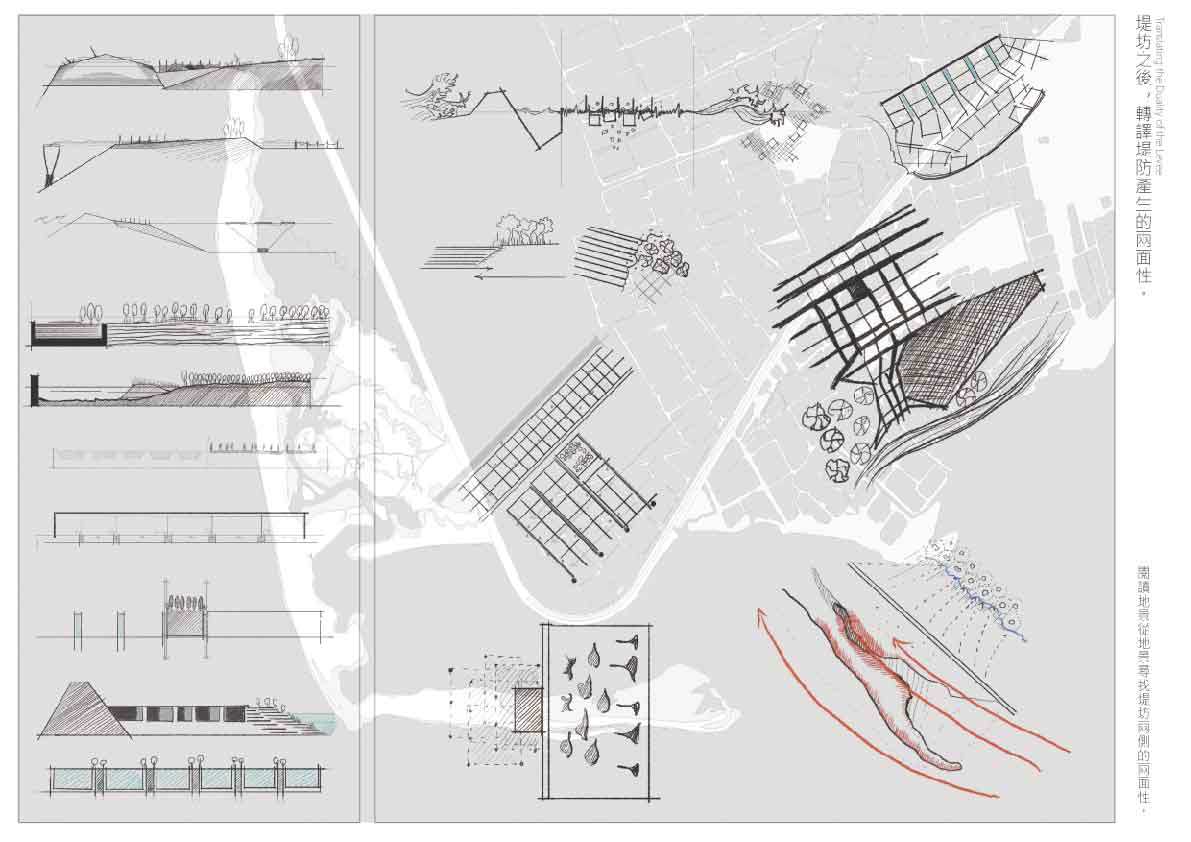
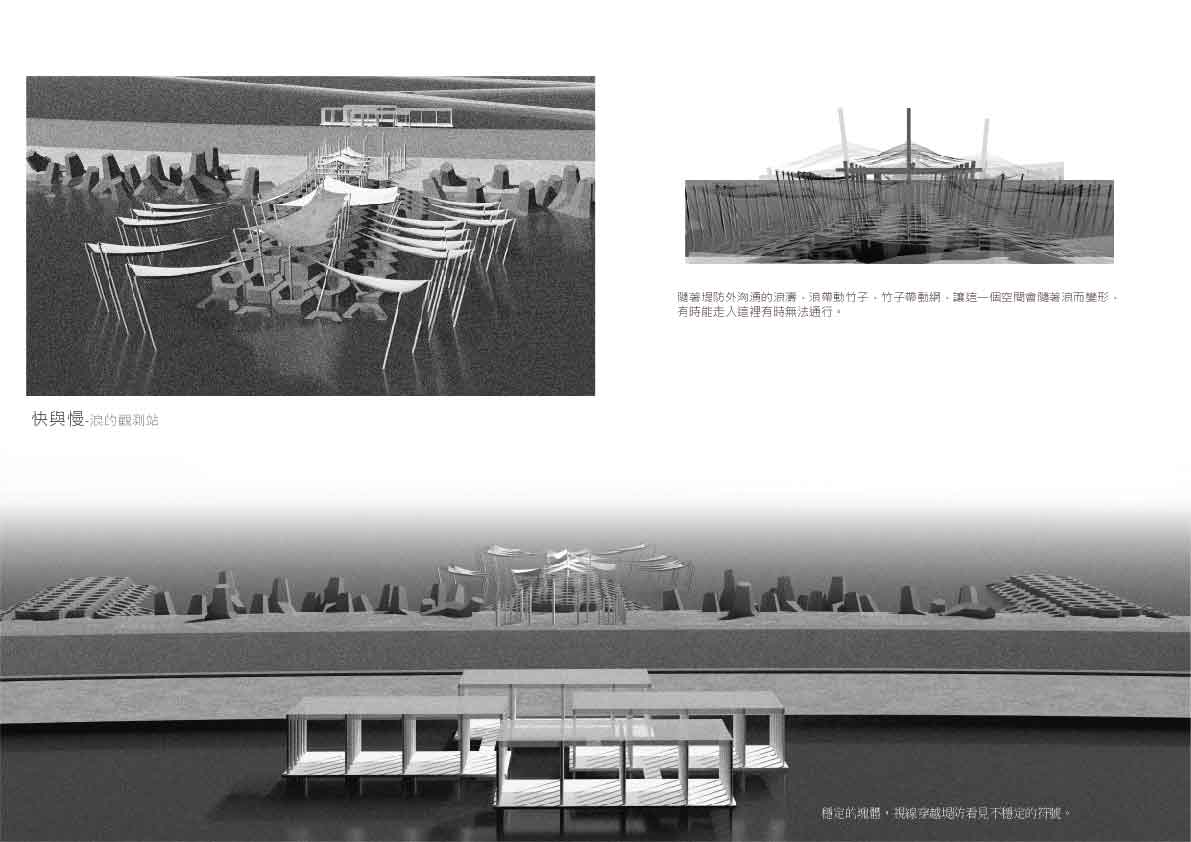
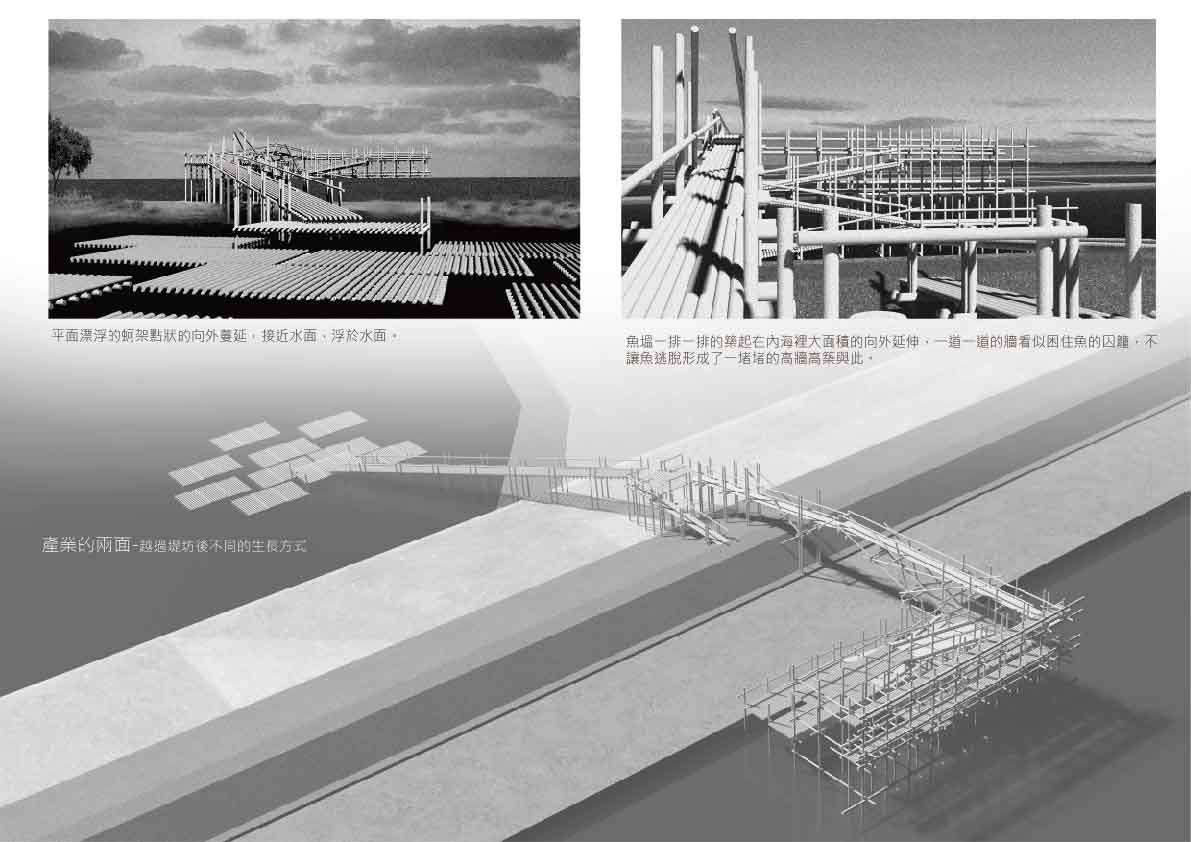
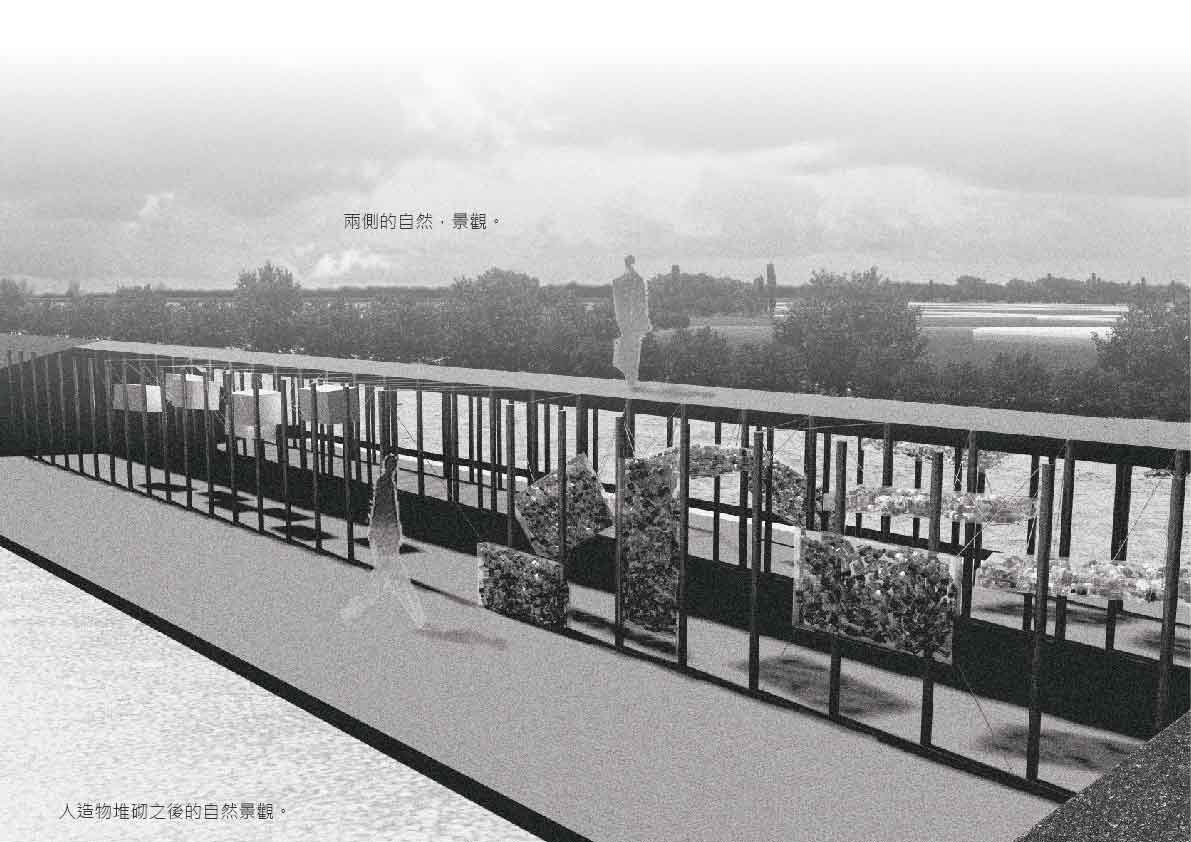
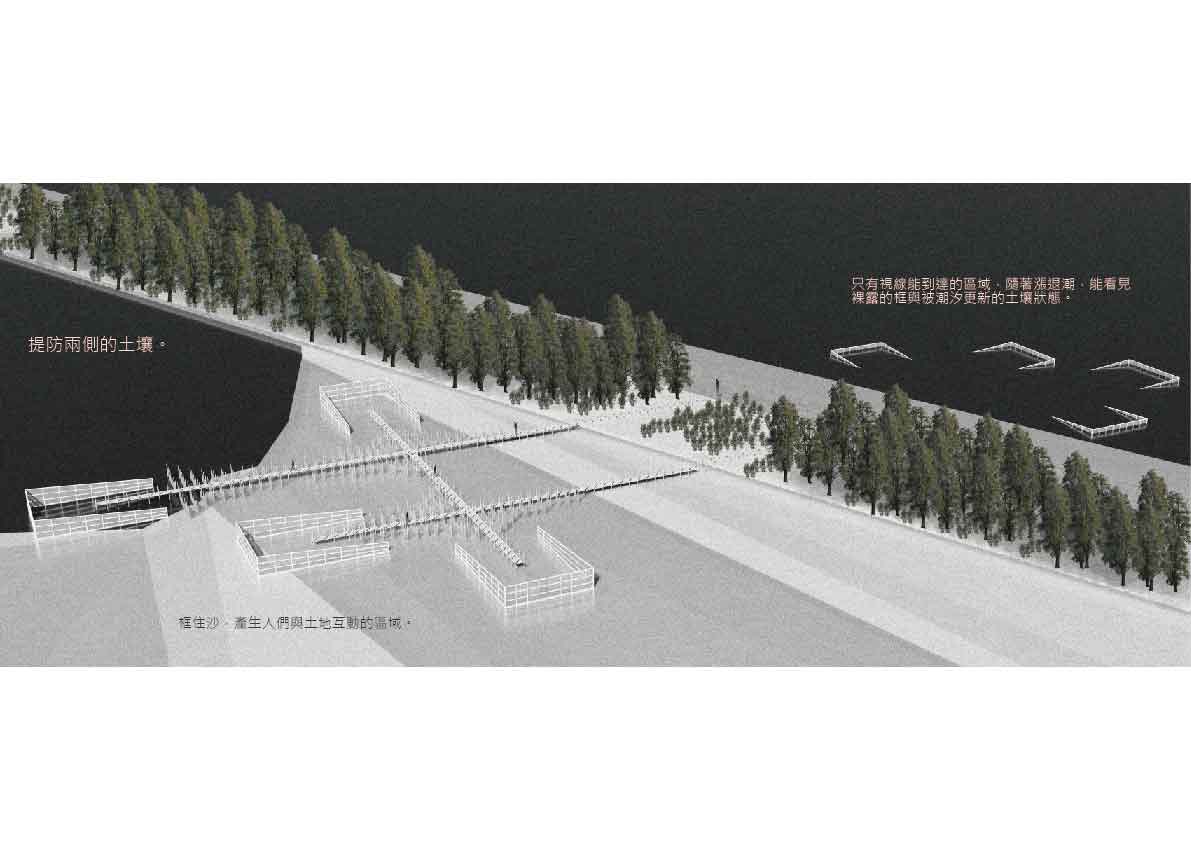
在台灣西部沿海的七股,一道V字形堤防如同界線,將原本連續的地景切割成四個截然不同的狀態。這條堤防的存在,不僅改變了地貌的自然演變,也形塑了兩側環境的對立與共存。一側是潮水無數次沖刷出的動態地景,沙洲在潮汐間流轉,地貌隨著時間推移而改變;另一側則是人為控制的穩定空間,堤防阻擋了海水的侵襲,使土地得以被固定與利用。這樣的分割創造出兩種截然不同的景觀,卻又透過潛在的水流與生態互動彼此影響,展現出一種既對立又相互依存的關係。
在這片土地上,界線並非絕對,而是連結與分離交錯的結果。我試圖透過不同的視角觀察這種對立關係,將其轉譯為更深層次的平衡與流動。當視野超越單一立場,這條堤防便不再只是區隔空間的障礙,而是一條交界,使得時間與環境的變動在其中流動,串聯起彼此的世界,塑造出一個超越物理分隔的平行場域。
Translating the Dual Realms of the Levee
Along Taiwan’s western coast in Qigu, a V-shaped levee stands as a boundary, fracturing the once-continuous landscape into four distinct states. Its presence not only alters the natural evolution of the terrain but also shapes a duality of opposition and coexistence.
On one side, the land is sculpted by the relentless ebb and flow of tides—sandbars shift, and the landscape transforms with time. On the other, human intervention imposes stability, shielding the land from the sea, fixing it in place for use and control. This division creates two contrasting landscapes, yet beneath the surface, hidden currents and ecological interactions weave them together, revealing a paradox of separation and interdependence.
Here, boundaries are neither absolute nor rigid but emerge from the interplay of division and connection. Through shifting perspectives, I seek to reinterpret this duality, unveiling a deeper equilibrium in motion. When viewed beyond a singular standpoint, the levee ceases to be merely a barrier—it becomes a threshold, where time and environment converge, linking fragmented worlds into a parallel realm beyond physical separation.